Zawar Hussain
TagGAN: A Generative Model for Data Tagging
Feb 25, 2025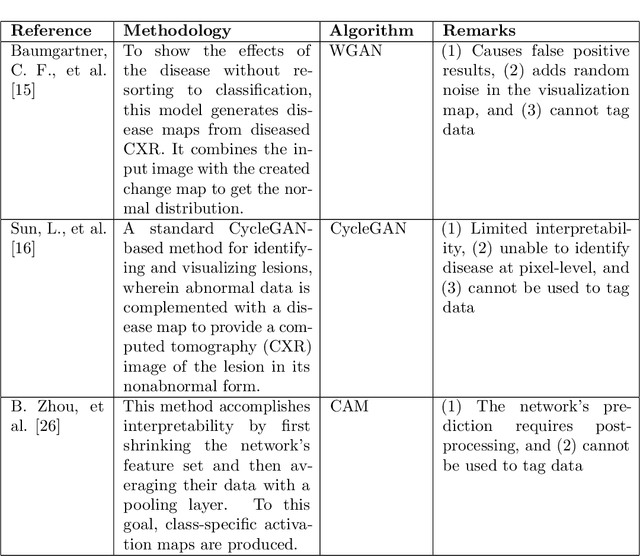
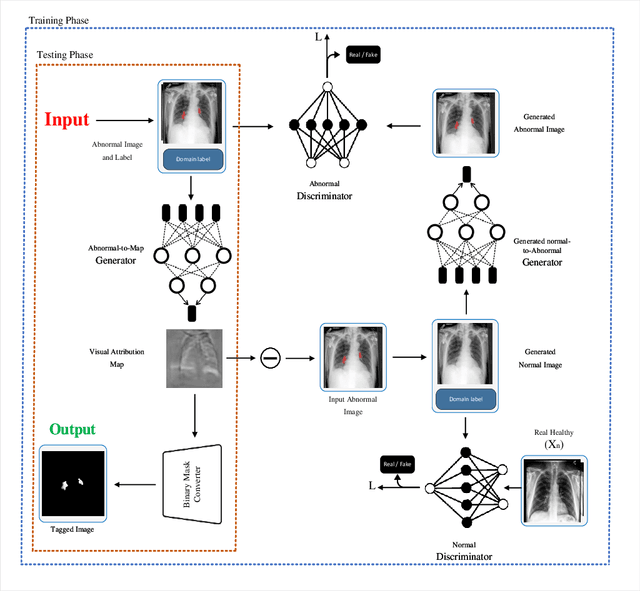
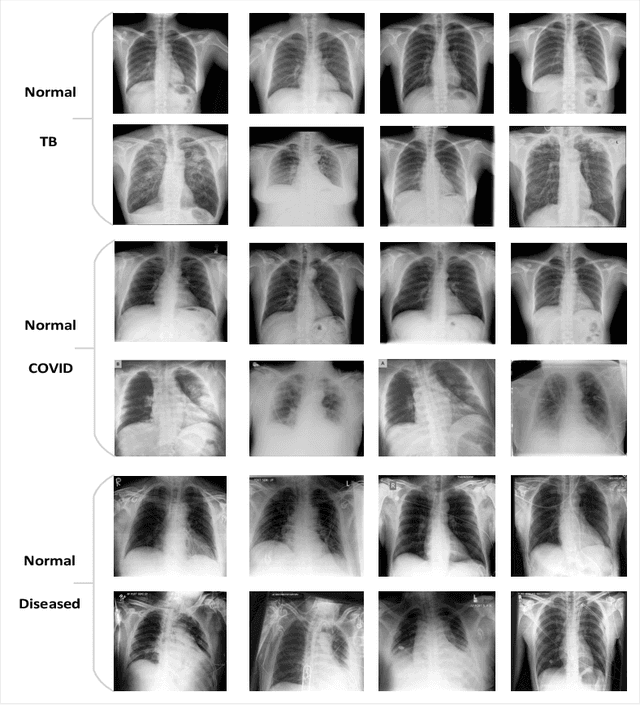

Abstract:Precise identification and localization of disease-specific features at the pixel-level are particularly important for early diagnosis, disease progression monitoring, and effective treatment in medical image analysis. However, conventional diagnostic AI systems lack decision transparency and cannot operate well in environments where there is a lack of pixel-level annotations. In this study, we propose a novel Generative Adversarial Networks (GANs)-based framework, TagGAN, which is tailored for weakly-supervised fine-grained disease map generation from purely image-level labeled data. TagGAN generates a pixel-level disease map during domain translation from an abnormal image to a normal representation. Later, this map is subtracted from the input abnormal image to convert it into its normal counterpart while preserving all the critical anatomical details. Our method is first to generate fine-grained disease maps to visualize disease lesions in a weekly supervised setting without requiring pixel-level annotations. This development enhances the interpretability of diagnostic AI by providing precise visualizations of disease-specific regions. It also introduces automated binary mask generation to assist radiologists. Empirical evaluations carried out on the benchmark datasets, CheXpert, TBX11K, and COVID-19, demonstrate the capability of TagGAN to outperform current top models in accurately identifying disease-specific pixels. This outcome highlights the capability of the proposed model to tag medical images, significantly reducing the workload for radiologists by eliminating the need for binary masks during training.
Trajectory Planning of Robotic Manipulator in Dynamic Environment Exploiting DRL
Mar 25, 2024



Abstract:This study is about the implementation of a reinforcement learning algorithm in the trajectory planning of manipulators. We have a 7-DOF robotic arm to pick and place the randomly placed block at a random target point in an unknown environment. The obstacle is randomly moving which creates a hurdle in picking the object. The objective of the robot is to avoid the obstacle and pick the block with constraints to a fixed timestamp. In this literature, we have applied a deep deterministic policy gradient (DDPG) algorithm and compared the model's efficiency with dense and sparse rewards.
A Review of the Non-Invasive Techniques for Monitoring Different Aspects of Sleep
Apr 27, 2021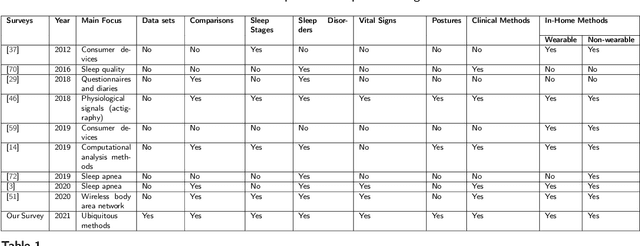
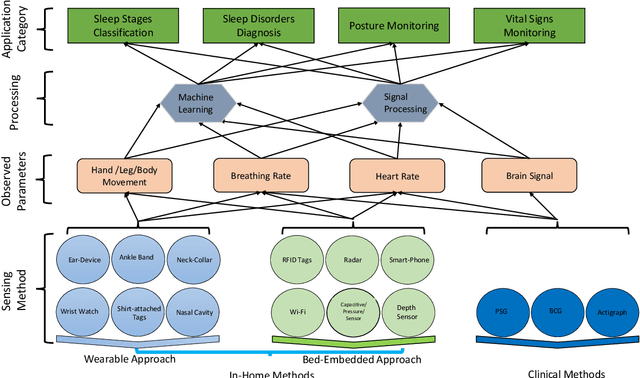
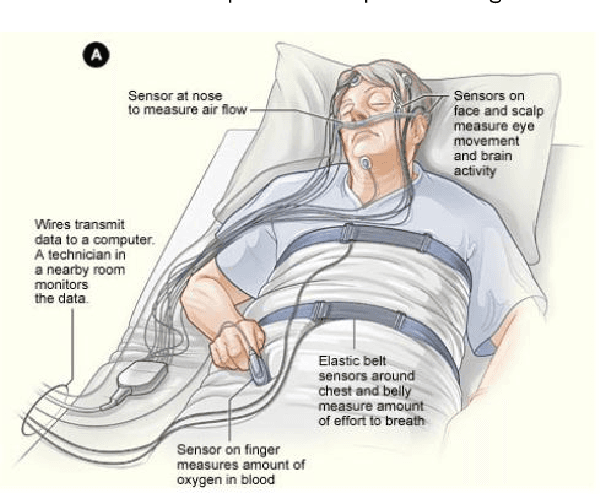
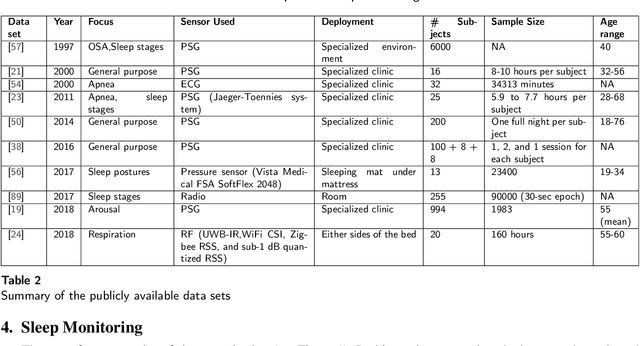
Abstract:Quality sleep is very important for a healthy life. Nowadays, many people around the world are not getting enough sleep which is having negative impacts on their lifestyles. Studies are being conducted for sleep monitoring and have now become an important tool for understanding sleep behavior. The gold standard method for sleep analysis is polysomnography (PSG) conducted in a clinical environment but this method is both expensive and complex for long-term use. With the advancements in the field of sensors and the introduction of off-the-shelf technologies, unobtrusive solutions are becoming common as alternatives for in-home sleep monitoring. Various solutions have been proposed using both wearable and non-wearable methods which are cheap and easy to use for in-home sleep monitoring. In this paper, we present a comprehensive survey of the latest research works (2015 and after) conducted in various categories of sleep monitoring including sleep stage classification, sleep posture recognition, sleep disorders detection, and vital signs monitoring. We review the latest works done using the non-invasive approach and cover both wearable and non-wearable methods. We discuss the design approaches and key attributes of the work presented and provide an extensive analysis based on 10 key factors, to give a comprehensive overview of the recent developments and trends in all four categories of sleep monitoring. We also present some publicly available datasets for different categories of sleep monitoring. In the end, we discuss several open issues and provide future research directions in the area of sleep monitoring.
Different Approaches for Human Activity Recognition: A Survey
Jun 11, 2019



Abstract:Human activity recognition has gained importance in recent years due to its applications in various fields such as health, security and surveillance, entertainment, and intelligent environments. A significant amount of work has been done on human activity recognition and researchers have leveraged different approaches, such as wearable, object-tagged, and device-free, to recognize human activities. In this article, we present a comprehensive survey of the work conducted over the period 2010-2018 in various areas of human activity recognition with main focus on device-free solutions. The device-free approach is becoming very popular due to the fact that the subject is not required to carry anything, instead, the environment is tagged with devices to capture the required information. We propose a new taxonomy for categorizing the research work conducted in the field of activity recognition and divide the existing literature into three sub-areas: action-based, motion-based, and interaction-based. We further divide these areas into ten different sub-topics and present the latest research work in these sub-topics. Unlike previous surveys which focus only on one type of activities, to the best of our knowledge, we cover all the sub-areas in activity recognition and provide a comparison of the latest research work in these sub-areas. Specifically, we discuss the key attributes and design approaches for the work presented. Then we provide extensive analysis based on 10 important metrics, to give the reader, a complete overview of the state-of-the-art techniques and trends in different sub-areas of human activity recognition. In the end, we discuss open research issues and provide future research directions in the field of human activity recognition.
Deep Autoencoder for Recommender Systems: Parameter Influence Analysis
Dec 25, 2018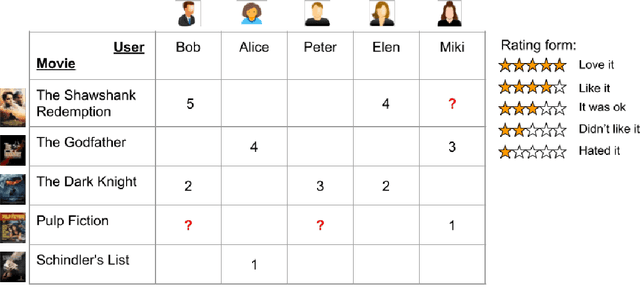
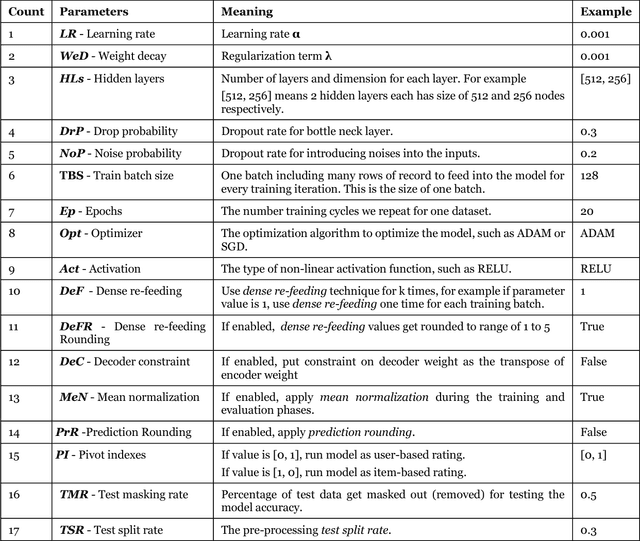
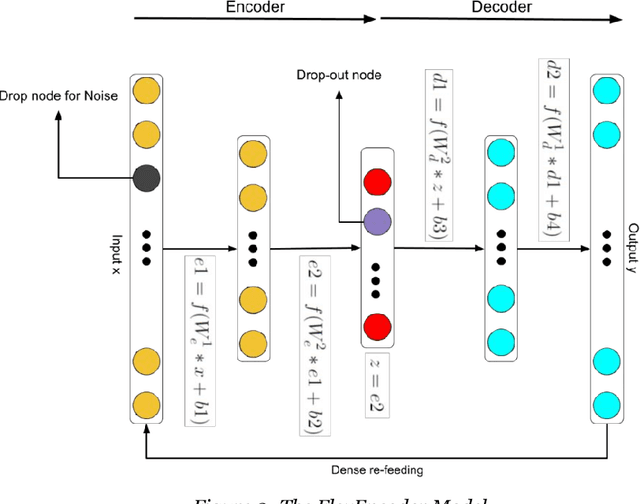
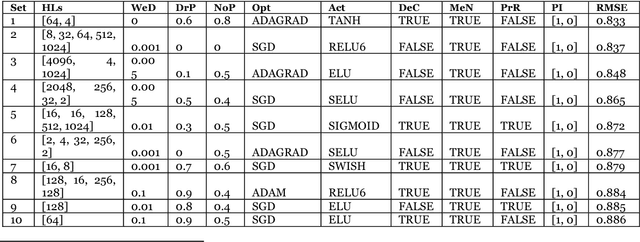
Abstract:Recommender systems have recently attracted many researchers in the deep learning community. The state-of-the-art deep neural network models used in recommender systems are typically multilayer perceptron and deep Autoencoder (DAE), among which DAE usually shows better performance due to its superior capability to reconstruct the inputs. However, we found existing DAE recommendation systems that have similar implementations on similar datasets result in vastly different parameter settings. In this work, we have built a flexible DAE model, named FlexEncoder that uses configurable parameters and unique features to analyse the parameter influences on the prediction accuracy of recommender systems. This will help us identify the best-performance parameters given a dataset. Extensive evaluation on the MovieLens datasets are conducted, which drives our conclusions on the influences of DAE parameters. Specifically, we find that DAE parameters strongly affect the prediction accuracy of the recommender systems, and the effect is transferable to similar datasets in a larger size. We open our code to public which could benefit both new users for DAE -- they can quickly understand how DAE works for recommendation systems, and experienced DAE users -- it easier for them to tune the parameters on different datasets.
 Add to Chrome
Add to Chrome Add to Firefox
Add to Firefox Add to Edge
Add to Edge